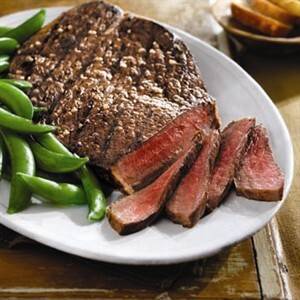“Lawmakers from cattle producing states are seeing red following a 571-page federal report that encourages Americans to go green,” according to a Feb. 23 story by Fox News. Beef producers say Obama is trying to kill their industry by proposing dietary guidelines that call for a reduction in red meat intake as a way to reduce Americans’ carbon footprint.
 “Every single one of us should be registering a comment on these guidelines,” says Val Wagner, who raises cattle with her husband and children in North Dakota. “Guidelines have a funny way of turning into regulations and mandates. And this will also set up how nutrition is taught, as well as food assistance funding and even military meals. You have until midnight April 8. Don’t pass by this opportunity.”
“Every single one of us should be registering a comment on these guidelines,” says Val Wagner, who raises cattle with her husband and children in North Dakota. “Guidelines have a funny way of turning into regulations and mandates. And this will also set up how nutrition is taught, as well as food assistance funding and even military meals. You have until midnight April 8. Don’t pass by this opportunity.”
This federal report will become the basis for government food assistance programs, military meals and school lunch programs, which are all “government-controlled programs.” I don’t like it, but I understand how these programs fall under the federal government’s jurisdiction. However, a government (at least in a Republic or a Democracy) should never “control” what gets placed on the plates of its citizens.
Here’s my beef with the proposed dietary guidelines:
- Dictating what, how much and when we eat infringes upon our freedom of choice. What is happening to America, Land of the Free? “Freedom of Choice” has been America’s hallmark since 1776, but are choices are becoming limited by the day. Setting dietary guidelines for beef consumption is one more example of government over-reach. This Administration has already nationalized healthcare, and my Facebook newsfeed has been filled with real-life examples of insurance being canceled since Obamacare was enacted.
- Reducing the amount of animal proteins in the school lunch program has been nothing short of disastrous! Due to “healthier meal requirements,” calories per plate are based on the age of children being served. The number of fruits and vegetables served, as well as whole grain foods, has increased. It doesn’t sound unreasonable until you learn this “one size fits all”-style of feeding kids does not take into account kids with high levels of physical activity. It also doesn’t take into account a child’s body mass, so a 5-year-old kindergarten student receives the same amount of food as an 11-year-old boy in the 5th grade.
- Today’s farming practices are sustainable. I don’t believe an environmental warning belongs in a nutritional report. Even if the environment was germane to nutrition, it’s unfounded.The ruling administration in Washington is taking special time out to bad-mouth a law-abiding industry. “Sustainability” is a certainly a buzz word today, but America’s farmers have been moving along the sustainability continuum for 25 years.
Congress addressed sustainability in the food and farming system as far back as the 1990 Farm Bill, wrote The Foodie Farmer (aka Registered Dietician and New England farmer Jennie Schmidt) in a February 21 post: “Under the law of the 1990 Farm Bill, the term sustainable agriculture means ‘an integrated system of plant and animal production practices having site specific application that will, over the long term:
- Satisfy human food and fiber needs.
- Enhance environmental quality and the natural resource base upon which the agricultural economy depends.
- Make the most efficient use of nonrenewable resources and on-farm resources and integrate, where appropriate, natural biological cycles and control.
- Sustain the economic viability of farm operations.
- Enhance the quality of life for farmers and society as a whole’.”
The Foodie Farmer blog post goes on to graphically illustrate the strides farmers have made by implementing best management practices (BMPs). It shows how farmers and ranchers are producing more food with fewer resources, as well as effectively refutes the Dietary Guidelines Advisory Committee (DGAC) stats that “up to 30% of human-generated greenhouse gas (GHG) emissions as EPA data shows otherwise. Click here to see how continuous improvement in the livestock sector allows us to produce meat today using less land, water and feed.
Agricultural productivity gains are vital to enable the global population access to healthy, nutritious and affordable food. Food production starts with a seed, so the seed industry plays a critical role in providing farmers with quality seed to meet the world’s demand for food, feed, fiber and fuel.
At Latham Hi‑Tech Seeds, we follow basic ground rules: combine the industry’s best genetics with the latest trait technologies to produce products that excel in local growing conditions. It is our hope by doing this, we can have a not only a positive impact on the farmer’s long-term success but on the environment and societies we serve. That’s why we’ll be submitting our comments on Dietary Guidelines for Americans, 2015.
I urge you – regardless of whether or not you produce cattle – to also comment online here. Why? The former lobbyist in me believes this is precedent setting… How much of your life do you want the U.S. government to control? The entrepreneur in me wants to let the free market to rule!
Related Posts:
